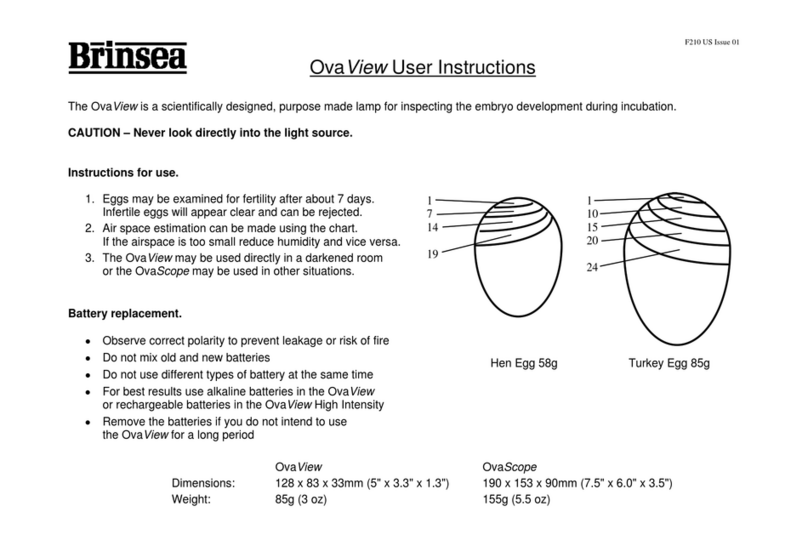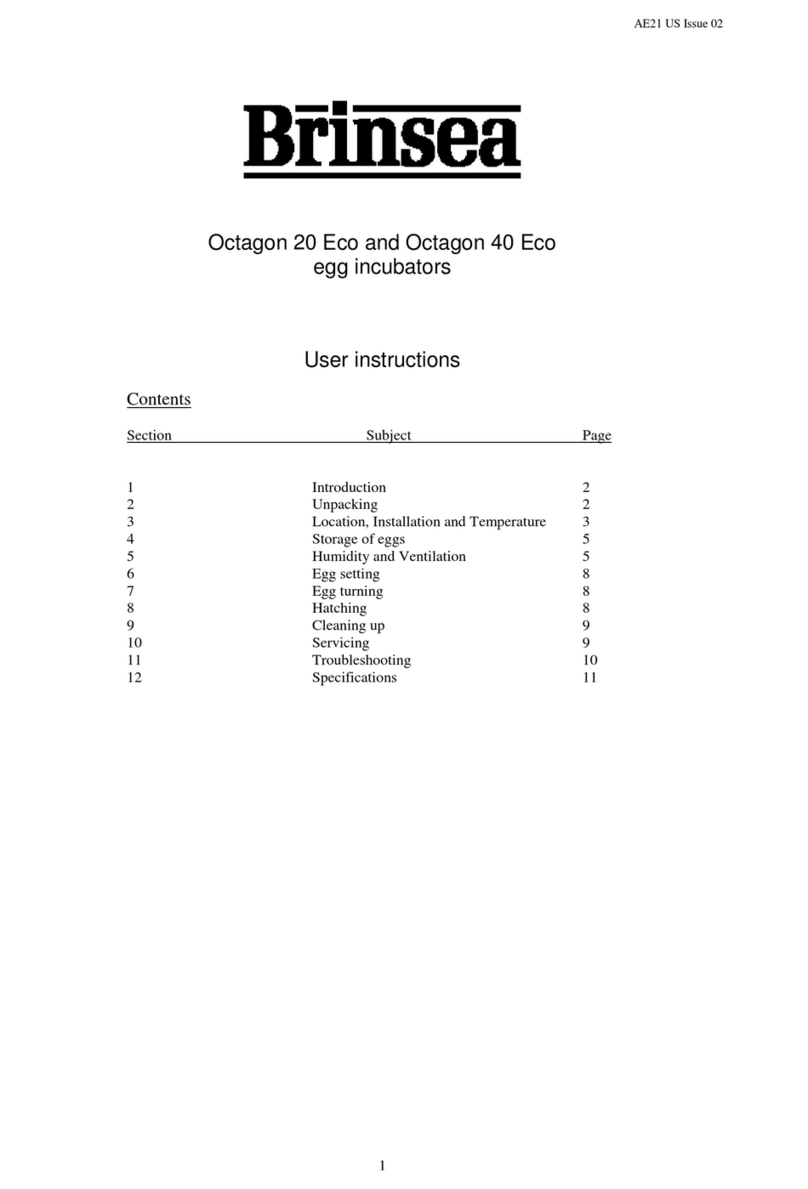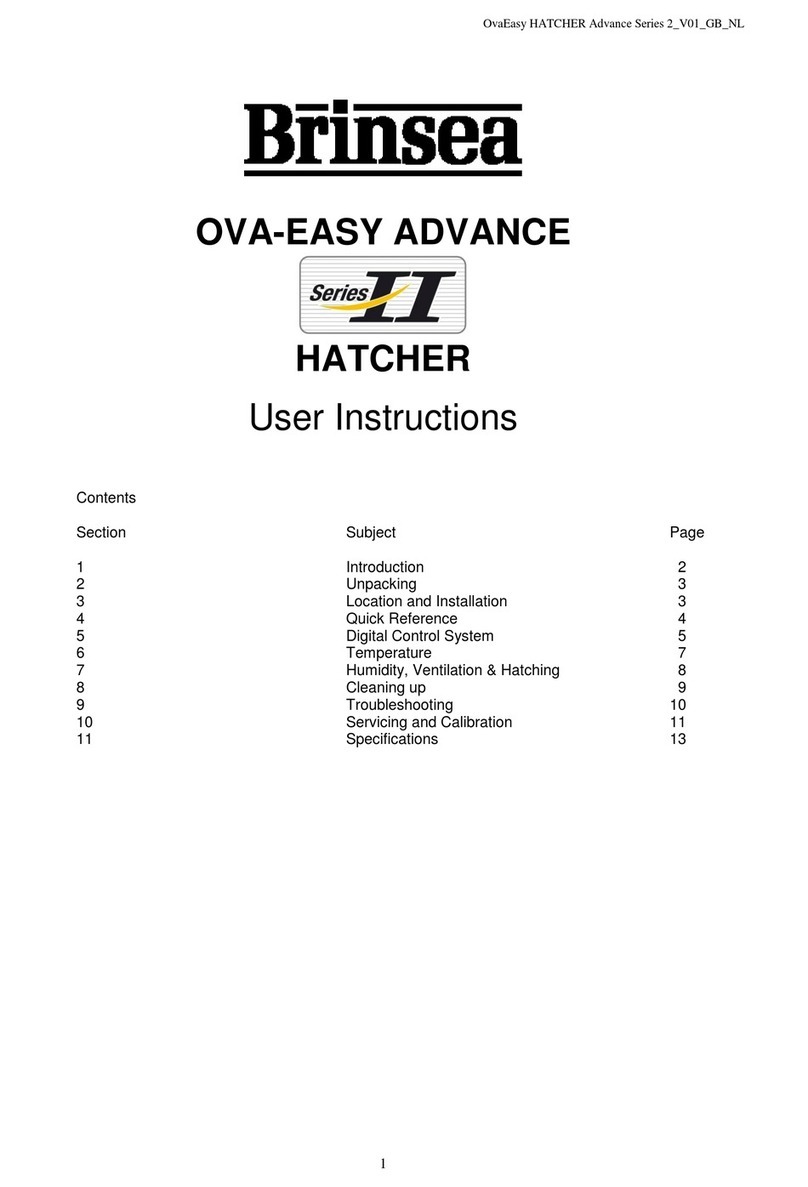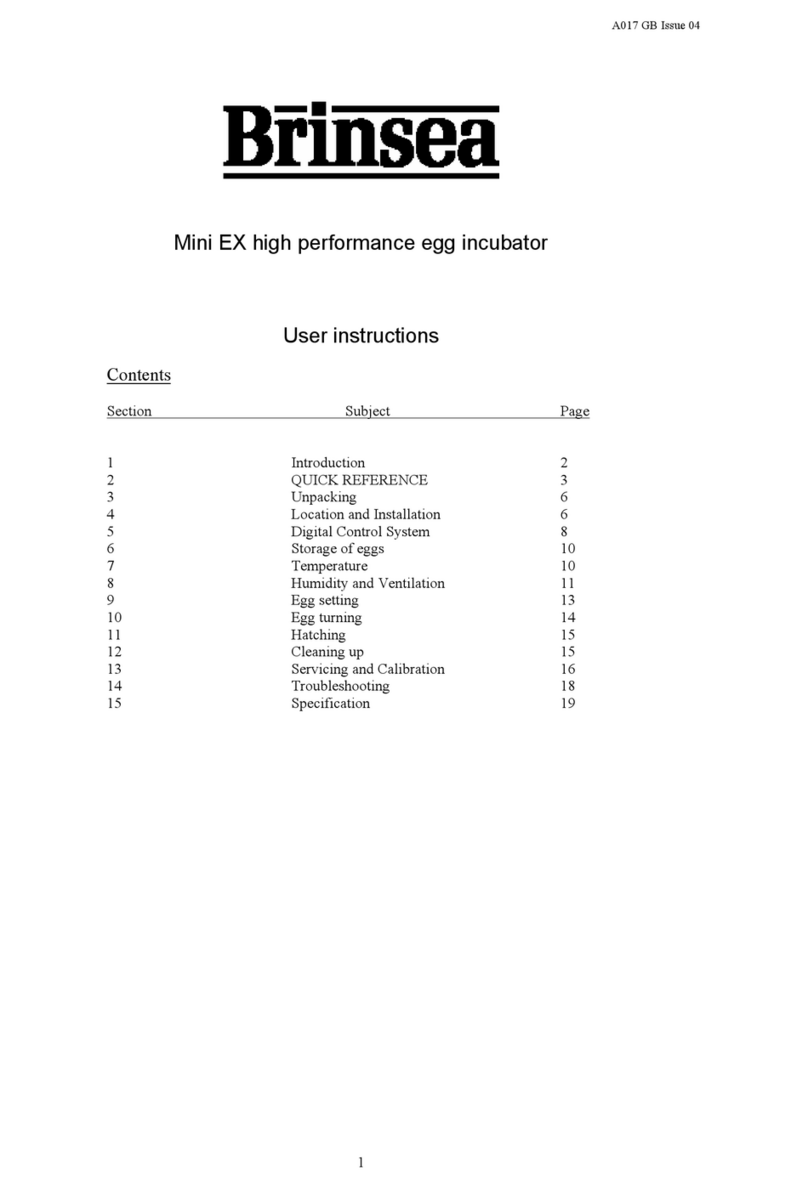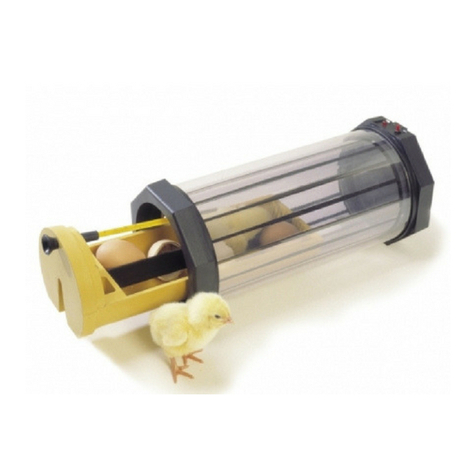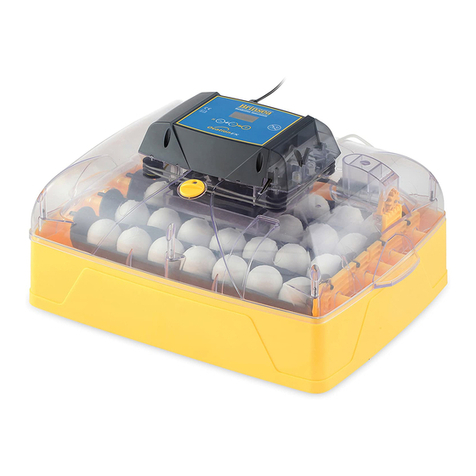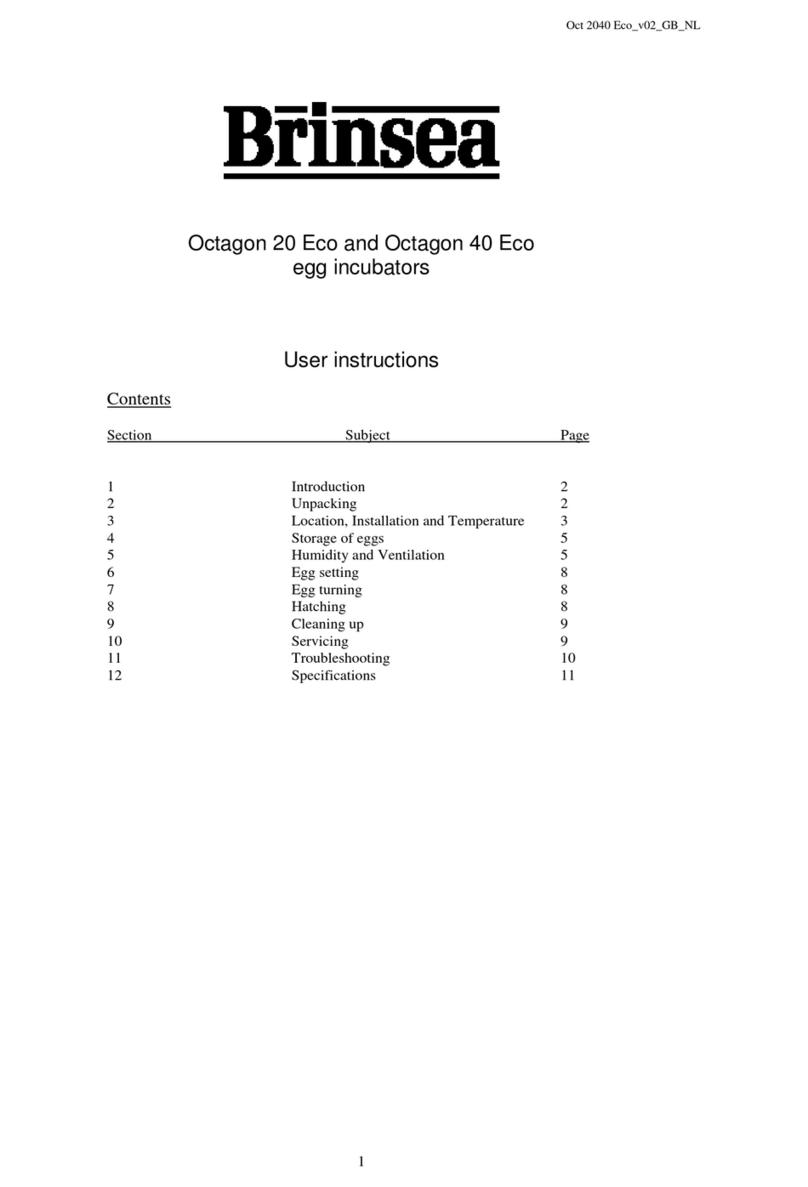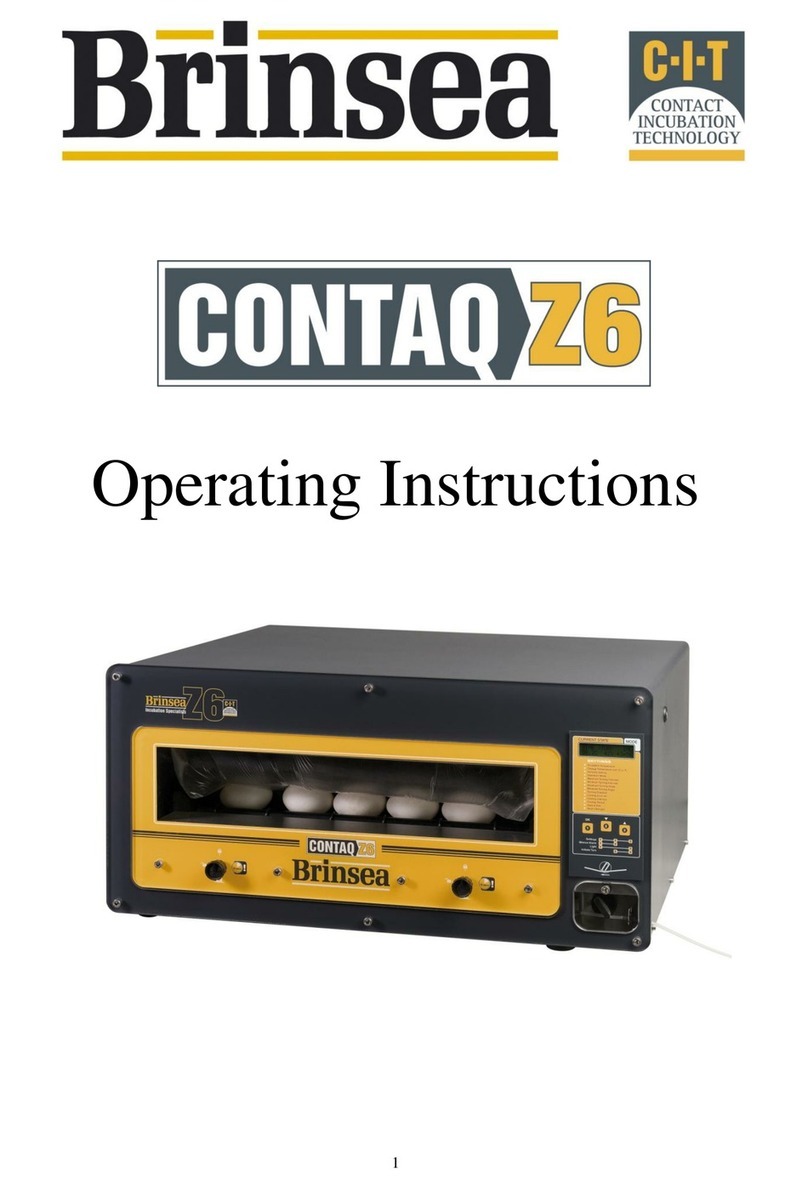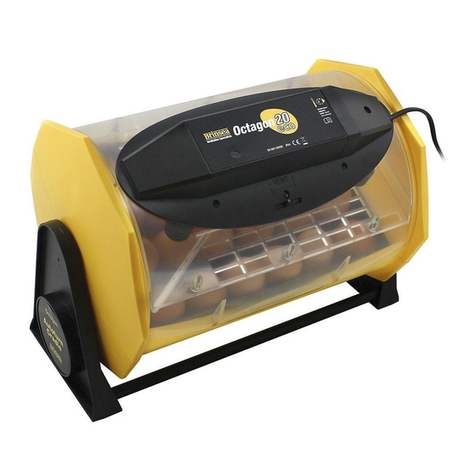6 HUMIDITY
UNDERSTANDING HUMIDITY
Short term variations in humidity are not important.
The average humidity over the incubation period
needs to be near optimum to achieve the ideal
weight loss.
High humidity for the day or two of hatching is also
important. Beware chronic, excessive humidity.
CONTROLLING HUMIDITY
Two factors affect incubation humidity: water evaporation within the cabinet (from eggs as well as from additional water) and
levels of ventilation. The water content of the air being drawn through the incubator will also have an effect.
There are two methods available to bird breeders to achieve correct humidity levels:
1: As a general guide for poultry/game/waterfowl, maintain water in one of the two halves of the central water pot from
the time eggs are set until 2 days before hatching is due - the depth of water doesn’t matter.
For all species fill both halves of the water pot for the last two days of incubation. Higher humidity levels are needed for
hatching to prevent membranes drying too quickly. Ensure the water pot guard is fitted to prevent chicks drowning.
The above guidelines make no provision for different ambient conditions and are necessarily rather generalised but they
are simple and often effective.
2: Monitor egg weight loss (which varies as a direct result of humidity) and correct them against published weight loss
figures for the species. This is the most reliable method and is recommended –particularly where poor hatch rates are
experienced or if eggs of high value are being incubated.
Eggs lose moisture through their shells and the rate of evaporation depends on the humidity levels around the eggs and
the shell porosity. During incubation eggs need to lose a fixed amount of water which corresponds to a loss in weight of
around 13-16% depending on species. By weighing eggs periodically during incubation it is possible to monitor and, if
necessary, correct humidity levels to achieve the correct weight loss.
HATCHING
In all cases the humidity for hatching needs to be high. Because of the short duration involved water/weight loss will not be
significantly affected. High humidity is necessary to prevent membranes drying and hardening before the hatch fully emerges.
Humidity will naturally increase as the first eggs begin to hatch and internal membranes begin to dry. This effect is in addition to
the increased area of water evaporation from the water pots. During hatching the high humidity levels will fall dramatically when
the lid is opened and will take some time to build up. Resist the temptation to lift the lid frequently –leave for at least 6 hours
between inspections.
For more detailed information on all aspects of egg incubation including helpful advice on getting best results please visit our
website at www.brinsea.com/brochures/BrinseaIncubationHandbook.pdf
